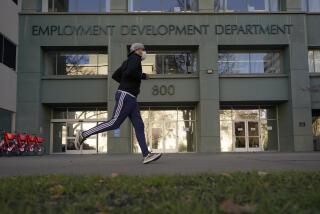$9.5 Million Awarded for Surplus Apples
- Share via
WASHINGTON — The government, acting under a program designed to reduce the apple surplus caused by the Alar scare, awarded $9.5 million to growers to compensate them for giving away 57.5 million pounds of apples Friday.
The apples will go to 56 “non-traditional” outlets, such as ethanol distillers and livestock feeders, in Connecticut, New York, Maine, Pennsylvania, Utah and Washington state.
The Agriculture Department stressed that the apples would not be put into the school lunch program.
Officials announced the program July 7 to help the apple industry recover from the Alar scare. Apple sales plunged last winter after the Natural Resources Defense Council charged that residues of Alar, a fruit-ripening agent, posed an unacceptably high risk of cancer, especially for children, who consume large amounts of apple juice and sauce.
Prices Lower Than in 1988
Apple stocks were 53% higher than normal at the start of July, and apple prices were running $3 to $4 a carton less than 1988’s depressed prices.
“The purpose of the apple assistance program was to deplete current perishable stocks before the new harvest becomes available in the fall, and it appears we have been helpful in doing that,” said Kenneth Clayton, acting administrator of the Agricultural Marketing Service.
The government said it would provide up to $15 million to cover the cost of taking surplus apples out of storage and donating them to groups such as food banks. The money for the program comes from an account traditionally used for food purchases.
Clayton said producers would receive payments ranging from $4.97 to $8.20 for 40-pound cartons of apples and from $9.45 to $16.50 per 100 pounds of apples in bulk bins.
Government officials have repeatedly said apples are safe to eat, although the Environmental Protection Agency has begun the process of withdrawing Alar from use. The maker of Alar took it off the U.S. market June 2.
It was estimated that Alar was used on about 5% of the U.S. apple crop.
More to Read
Sign up for Essential California
The most important California stories and recommendations in your inbox every morning.
You may occasionally receive promotional content from the Los Angeles Times.










